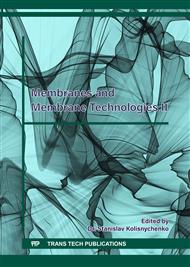p.136
p.142
p.152
p.174
p.195
p.201
p.215
p.221
p.226
Graphene Utilization for Water Desalination Process
Abstract:
Though above 70% of the Earth is covered by water, most of the seas and oceans are unusable for drinking. Freshwater lakes, rivers and underground aquifers imply 2.5 percent of the global’s whole freshwater supply. Unfortunately, in addition to being scarce, fresh water is dreadfully unevenly spread. Enhanced demand for freshwater is a global concern. In many countries demanding is further than regular reserves. Sensible use of water, reducing spreading losses and upgraded treatment of recycled water to mitigate the concern, though, water scarcity is still presented consequently desalination of seawater is highly required. Graphene, a single sheet of carbon atoms, possibly will deliver the principal for a novel category of extremely permeable membranes for water purification and desalination. Though, a one atom thickness graphene reveals both brilliant mechanical strength and impermeability to atoms as small as helium. High-density, subnanometer pores within graphene have the potential for ultra-fast water permeance and high solute rejection as the atomic thinness makes slight resistance to stream which deters the transfer of solutes bigger than the pores. The two-dimensional, nanoporous membrane is expected to display orders-of-magnitude permeability and selectivity enhancement over current separation membranes for processes such as brackish water, water softening, or nanofiltration. This study is aimed that the existing desalination methods are not adequate to upgrade water sources unless the desalination technologies are improved significantly. Nanotechnology and utilizing graphene will deliver desalination technology to meet the requirements in the near future. Lately, novel procedures have been technologically progressed by means of nanotechnology and applying graphene for water desalination. This research will emphasize the concept of water desalination for the near futures.
Info:
Periodical:
Pages:
195-200
Citation:
Online since:
February 2019
Authors:
Keywords:
Price:
Сopyright:
© 2019 Trans Tech Publications Ltd. All Rights Reserved
Share:
Citation:



